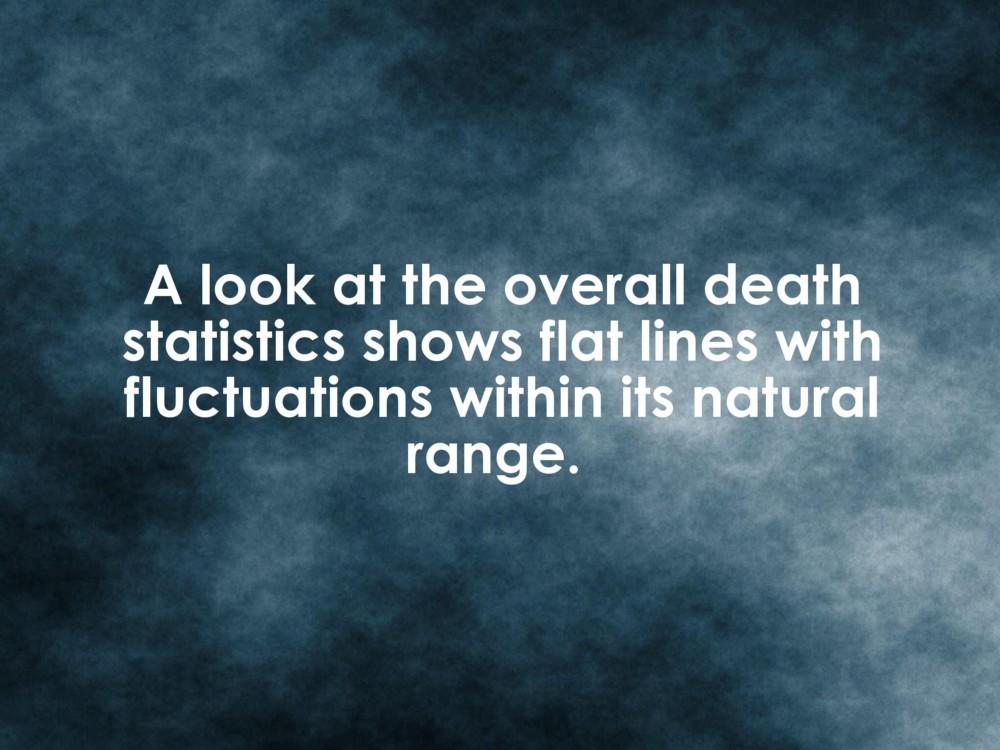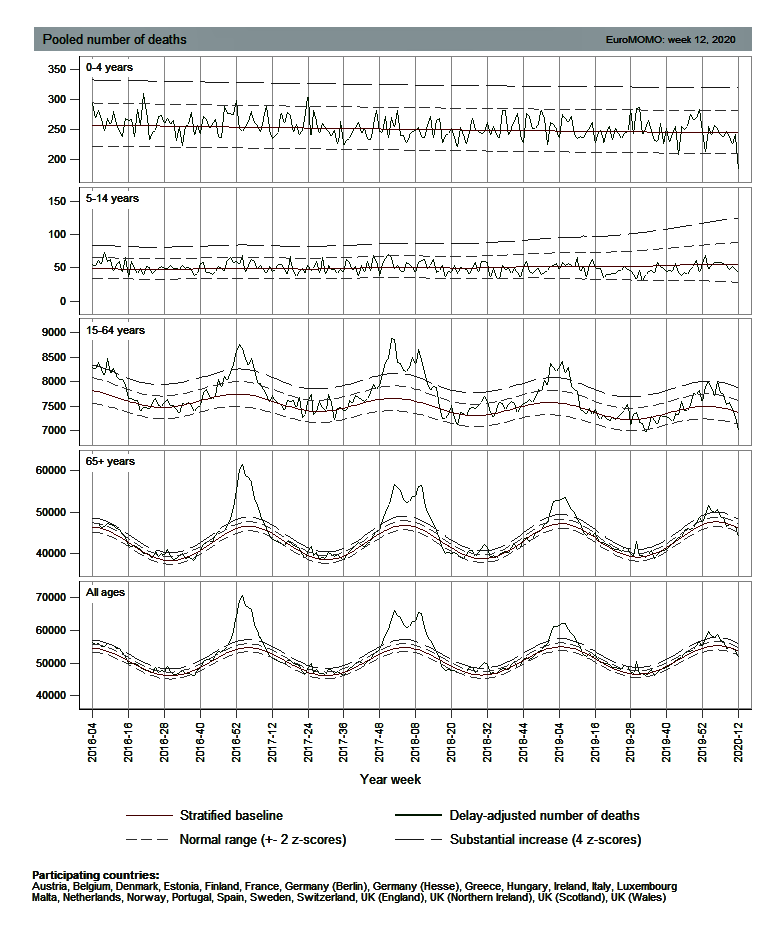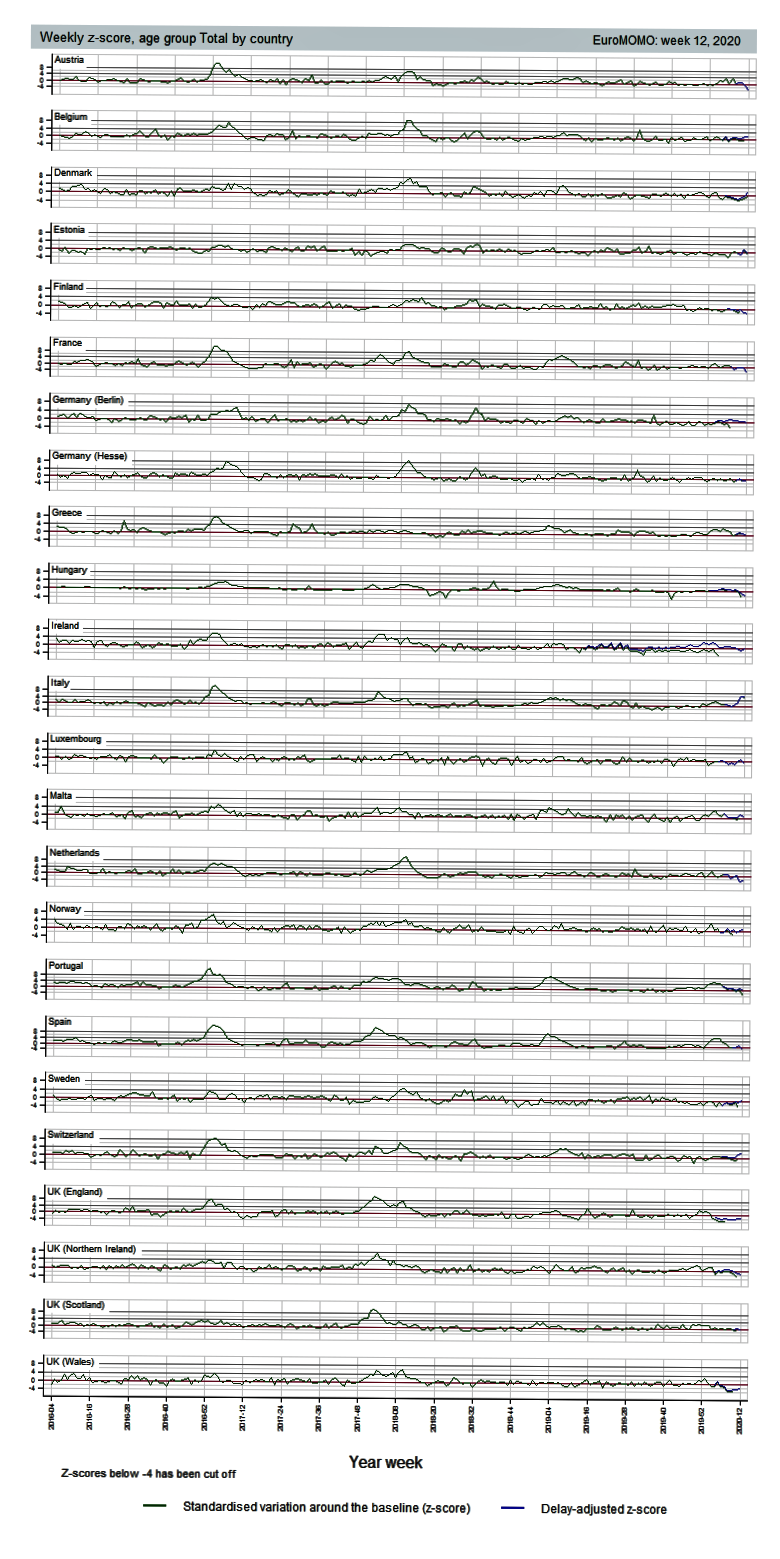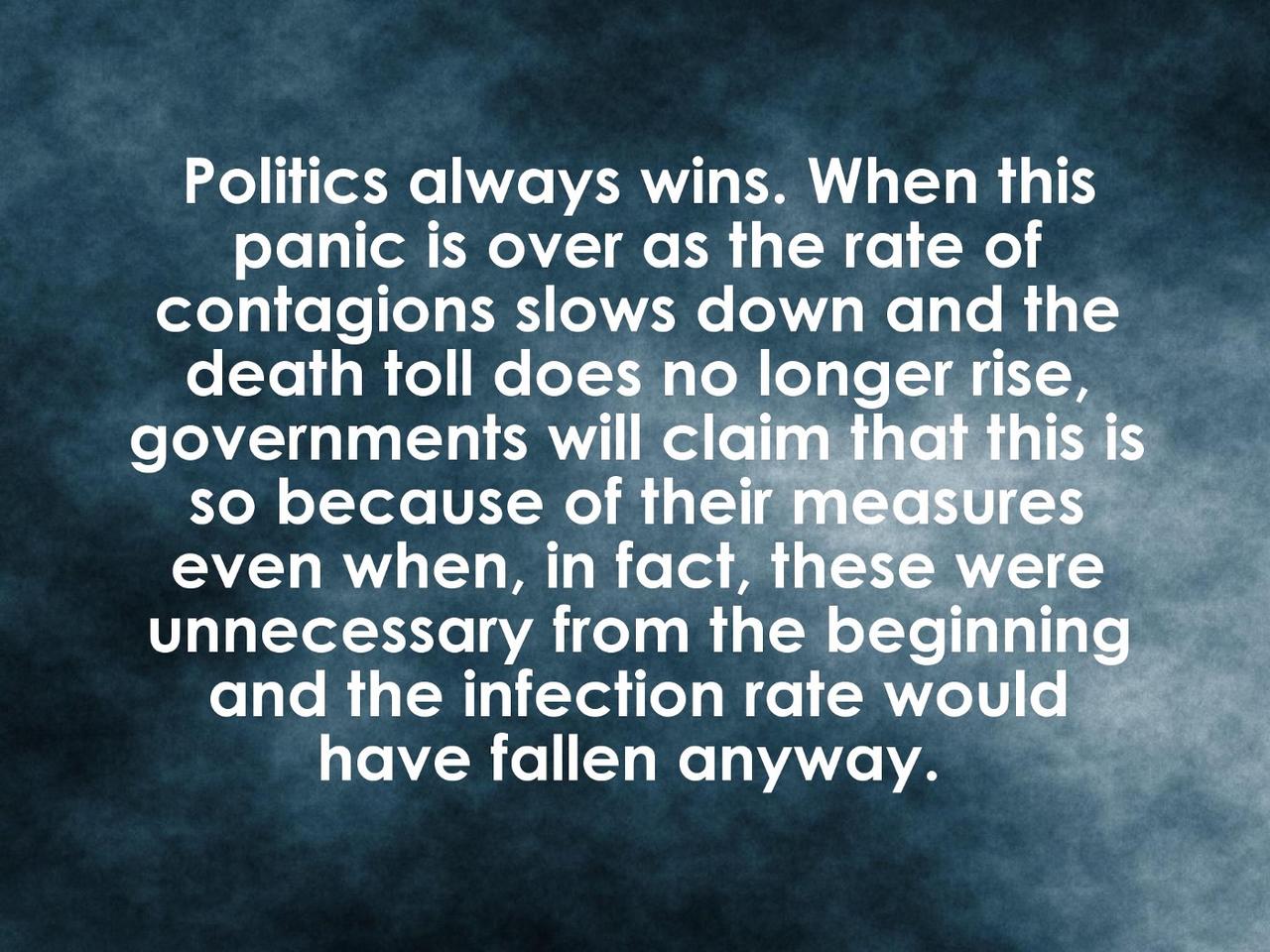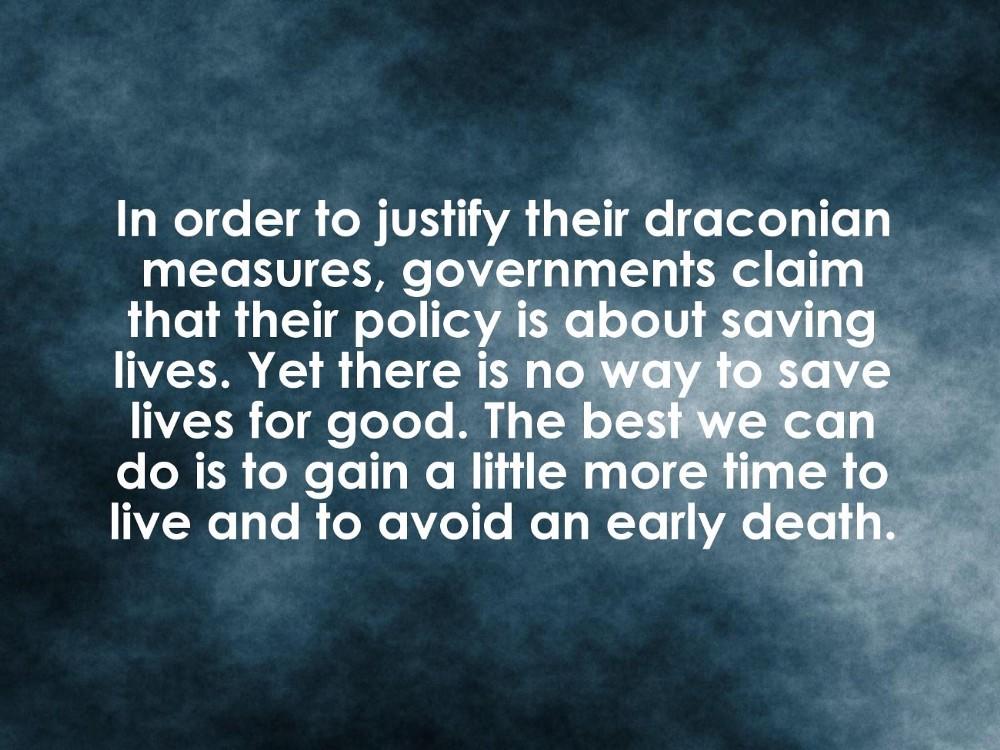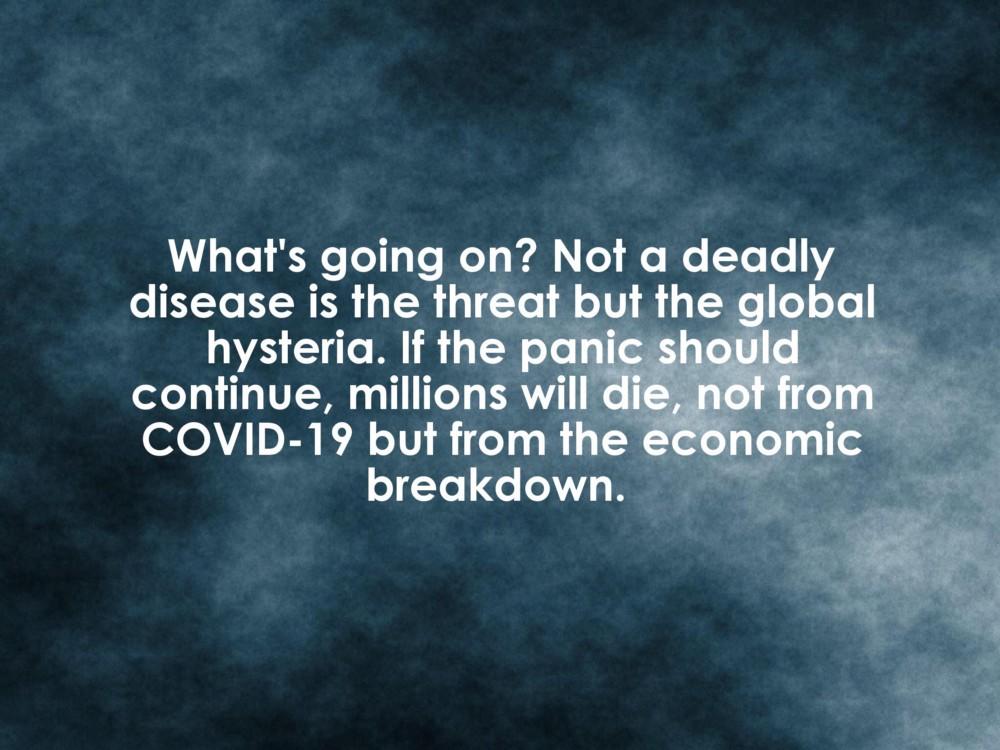Anyone with some basic knowledge in mathematical modeling who had taken a look at the structure of the “Imperial College”-model would have noted the faults of this approach and its exaggerations. The model’s prognosis that the United Kingdom would have to count with more than half a million deaths and a complete overload of its health system reversed the British government’s earlier decision to use prudential surveillance and specifically targeted intervention and to shift to the full-control strategy, which required massive intervention into the public and private life of the nation. The leaders of other countries that were somewhat still in doubt jumped on the bandwagon and the march into a tyrannical State was programmed.
It was too late when the authors of the model finally revised their original estimate from 500 thousand to 20 thousand and later on lowered this number even more. The governments had already set into motion their emergency plans.
After declaring the coronavirus a pandemic by the World Health Organization (WHO), agendas that had been prepared years ago were set into motion and the state agencies followed the procedures that were prescribed by the International Health Regulations (IHR) as the international legal instrument that is binding on 196 countries across the globe, including all the Member States of WHO.
Even now, months after the outbreak of the virus, the true size of the threat remains unclear. The quantitative basis is still too small to make a reliable projection.
If the modelers and the responsible government bodies had looked at the basic numbers instead of elaborating an apparently sophisticated model, they would have noticed that there has been no noticeable rise of the death rate. A look at the overall death statistics shows flat lines with fluctuations within its natural range. Even in Italy, there has not yet been a higher number of deaths than usual in the past couple of months. In absolute numbers, the death count is actually slightly down because of the seasonal factor that wintertime is over.
Figure 1: Pooled number of deaths in reporting countries for age groups
The point to note is that there has been an increased mortality rate in specific areas of Italy yet in relative terms the heightened frequency of deaths is not strong enough to show up in the national statistics. The epicenter of the virus outbreak in Italy is concentrated in its Northern part and there in specific cities. The overall reported death toll of COVID-19 does not appear in a significant measure beyond earlier peaks. (Figure 2).
Figure 2: Weekly z-score total by country
What makes the coronavirus crisis special is not the number of deaths but the reaction to the outbreak. Out of fear that the epidemic would get out of control and that the health care systems would be over-fraught with cases, governments in Europe, the United States and in many other countries implanted measures to ward off the spread of the coronavirus.
The amazing thing with the reaction is how in unison this was done and how drastic the measures are. When the WHO triggered the alarm bell, governments that had treaties in place to act according to pre-established plans in the case of declared “pandemic” virtually locked-up large parts of the population of whole countries and brought their economies to a standstill. As a consequence, many people suffer from paranoia because of the existential fears that come when economically active people see the source of their incomes vanish and the elderly have to watch how the savings in their pension accounts melts down or when getting sick are put away to eventually die alone in a hospital because visits even of their close relatives are prohibited.
If there had been no media hype about the coronavirus and if the governments had not resorted to drastic measures in foolish obeyance and submission to the commands by the World Health Organization, hardly anyone beyond some specialists probably would have noticed the coronavirus. Mutations of viruses happen all of the time and most of them do not do more harm than the influenza virus. The family of coronavirus is very large and its existence has been known since the 1960s.
Bound by their international legal obligations and confronted with a media hype, governments began to implement ever harsher measures to contain the virus and “flatten the curve” of its dissemination. The media helped to create a reality of its own as Niklas Luhmann had shown in his sociological studies with the difference between the “imagined reality” of the media (Medienwirklichkeit) and the reality of life (Lebenswirklichkeit).
Governments succumbed to the World Health Organization, were brought under the spell of the public hysteria and fell hostage to the medical-industrial complex, whose political arm is the WHO and which rapidly has assumed a role to act as a kind of world government.
In order to justify their draconian measures, governments claim that their policy is about “saving lives”. Yet there is no way “to save lives” for good. The best we can do is to gain a little more time to live and to avoid an early death. Therefore, the question is not whether to save lives or not, but by which measures we will gain more years or may lose time to live. When we close down the economy, those who thereby avoid contagion will gain a few more years. On the other hand, because of the shutdown, millions of people will lose many years of their lifetime. Make your choice.
Not the coronavirus will ruin us you but the coming recession and if the recession does not ruin us, the hyperinflation combined with a depression will do. It is as if the Tower had given the command to the pilot to turn off the engines of the airplane in mid-air because of the presumption that there might be some unknown danger at the destination airport.
We do not know whether the number of infected will decrease because of the measures that are in place now, but we can be certain that the number of suicides, divorces, alcoholics, indebted, impoverished and bankrupt persons will increase.
In a historical perspective, we are currently not experiencing anything new or unusual, and the general human hysteria is nothing other than what has been experienced many times in history. But this should not make us complacent. The hype of public opinion creates a mass psychosis that brings down the fools and wise equally.
Politics always wins. When this panic is over as the rate of contagions slows down and the death toll does no longer rise, governments will claim that this is so because of their measures even when, in fact, these were unnecessary from the beginning and the infection rate would have fallen anyway.
What’s going on? Not a deadly disease is the threat but the global hysteria. If the panic should continue, millions will die, not from COVID-19 but from the economic breakdown.
The panic has no basis in the facts. There are emergencies, but they are locally concentrated such as in specific cities in a specific region of Italy. More than a quarter of the world has opted to lock in their populations and shutdown their economies, among them many European countries, the United States, Canada, and Australia. While this may slow down the spread of the contagion, it will bring down our capacity to deal with our other needs, including the provision of medicine.
No-one knows for sure how deadly the coronavirus really is. The perceived path of contagion is a projection. This will also be the case with a future appearance of new viruses and their modification. Sooner or later, when COVID-19 is over, COVID-20 will show up and thereafter COVID-21 will come.
Our wants are always manifold and therefore require a trade-off. The idea of “saving lives” as an absolute good is absurd and can only gain such prominence in a society that has lost its touch with the elementary truths of human existence.
